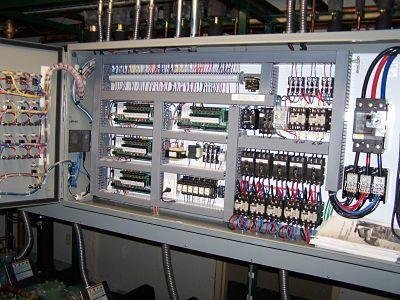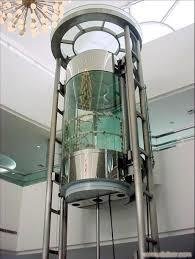Welcome to our essay example! Read it to learn more about mechanical and electrical systems in commercial building. Here, you will also discover the importance of wiring and electrical systems in buildings.
Abstract
Buildings and components require mechanical and electrical systems to be safe (Janis 2008). An electrical system is a utility that supplies electricity to the required components and equipment within a building. The system is made up of connections of several equipments integrated within the building structure. When there is no electricity from the mains, solar energy can power the electrical system (Gevorkian, 2010).
A solar system comprises of solar panels, inverters, and batteries. The solar energy is converted to electricity with the help of an inverter. On the other hand, mechanical system plays an important role in the provision of various services. Mechanical systems are responsible for the running of elevators, lifts, plumbing, heating, and air conditioners.
Mechanical and Electrical Systems in Buildings: Introduction
Over time, mechanical and electrical requirements have varied because of advances in technology. Building structures built in the last 20 years do not have the same requirements as the current buildings. Equally, the future’s buildings will have different designs. An industrial building design differs from both the residential and business. The differences are attributed to the mechanical and electrical requirements.
Therefore, architects and engineers should work together in ensuring that both mechanical and electrical systems are properly installed to meet the required standards.
Importance of Mechanical Electrical Systems in Buildings
There are several benefits of electrical systems in a building and its components. A number of equipments within a building depend on electricity for their operations. The sources of energy could be either solar energy or electricity from the mains (Hestnes & Hastings, 2013).
An electrical system comprises of connections of several equipments integrated within the building structure. In a building, numerous devices form part of an electrical system. The devices might include lighting bulbs, heaters, fans, switches, generators, transformer, electric cables, sockets, batteries, inverter, and solar panels.
Electrical system provides the power needed to light the building during the day and night. Lighting system plays a crucial role in enhancing security at nights. Security guards require lighting systems for proper surveillance. Equally, the operation of CCTV requires power.
Therefore, the installation of electrical systems is very important in buildings. Other devices and components that require electrical systems are heaters and fans. The proper functioning of air conditioners provides an appropriate working environment within the building.
Generators can be used as a power backup supply to the critical equipments within a building. For instance, the functioning of elevators and lifts within a building require electricity without any interruptions. In addition, other devices such as computers require power at all times. The computers used in control of lifts, security control rooms, closed circuit television need to be powered to be operational at all times.
Generators uses diesel to generate electricity, which is then fed to the main power lines during blackouts. The power from this part of the electrical system plays a great role in the running of the building operations.
If the building hosts a busy large business organization, the electrical system of the building should be reliable and must meet the power demands of the building and component (Krauter, 2006). In this respect, the generator will come in handy.

Figure 1: Electrical distribution system

Figure 2: Lighting system of a building
On the other hand, mechanical system plays a great role in the provision of various services. Mechanical systems are responsible for the running of elevators, lifts, plumbing, heating, and air conditioners (Wujek & Dagostino, 2010). The above machines are used to solve the problem of space as well as provision of proper ventilation.
The need for more space motivated the engineers and architectures to design and build storey buildings. With the construction of storey buildings, the use of elevators and lifts became a necessity. The mechanical systems are also integrated in the pumps, blowers, compressors, motors, and boilers (Janis 2008).
Pumping devices ensure water and sewerage systems are operating within a building. Actually, there is no building without water and sewerage system, hence the need for mechanical systems.
Generally, the main objective of mechanical system is to create a comfortable life and ensure proper air conditioning (Janis 2008). Notably, the usage of mechanical systems is to be blamed for the increasing energy cost in buildings.
Therefore, efficient designs should be adopted to reduce energy consumption in the end. To realize a high performance of both the electrical and mechanical systems, integrated designs should be embraced. Integrated designs will ultimately lead to low operating cost, easier maintenance, and improved comfort.

Figure 3: Residential mechanical system

Figure 4: Elevator
Mechanical and Electrical System in Building: Conclusion
Mechanical and electrical systems form a very important part of any building (Janis 2008). They are needed for operations of lighting, heaters, fans, elevators and lifts.
The designs of the mechanical and electrical systems vary from one building to another, depending on the design and purpose of the building and the components within the building. An industrial building design differs from both the residential and business building because their mechanical and electrical power requirements vary.
References
Gevorkian, P. (2010). Alternative energy systems in building design. New York: McGraw-Hill.
Hestnes, A., & Hastings, R. (2013). Solar Energy Houses Strategies, Technologies, Examples. Hoboken: Taylor and Francis.
Janis R (2008). Mechanical & Electrical Systems in Buildings (4th ed). New York: McGraw-Hill.
Krauter, S. C. (2006). Solar electric power generation – photovoltaic energy systems modeling of optical and thermal performance, electrical yield, energy balance, effect on reduction of greenhouse gas emissions. Berlin: Springer.
Wujek, J. B., & Dagostino, F. R. (2010). Mechanical and electrical systems in architecture, engineering, and construction (5th ed.). Upper Saddle River, N.J.: Prentice Hall.